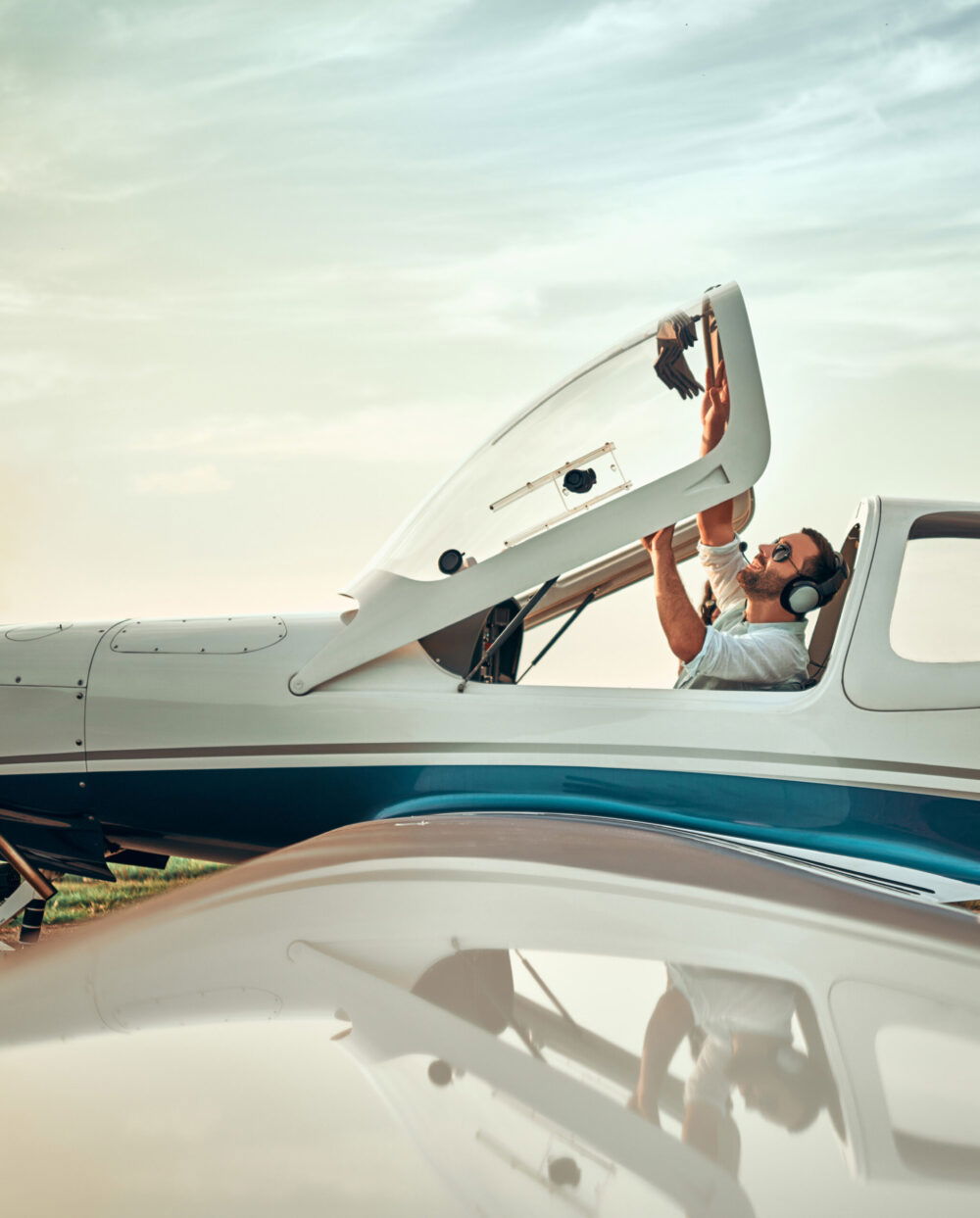It’s a rare pilot indeed who learns to fly in a single-engine airplane and never dreams of jumping into a larger, sleeker machine that carries more people, flies faster and farther, and of course, is outfitted with all the latest electronic navigation and communications gear. For pilots able to climb that ownership ladder—often men and women who plan to use that larger airplane for business—these dreams used to mean stepping up to a light, unpressurized piston twin such as a Cessna 310 or a Beechcraft Baron. But the days of piston-powered twins have come and gone.
Now, a move-up airplane translates into at least a high-performance pressurized single such as the Piper M600, the TBM 900 series or a Pilatus PC-12, offering better weather and cruise-speed options. These aircraft operate with just a single powerplant—like the other big player in the move-up market, the Cirrus Vision SF50 jet.
Turbine powerplants seem to be a significant factor in these decisions, with Pratt & Whitney Canada’s PT6 being a popular option. And what’s not to like? Starting a turboprop these days is pretty simple thanks to the full-authority digital engine control system installed on most. Often, it takes no more than the time needed to taxi from the ramp to the hold-short line for a turboprop to be ready to go. PT6s also don’t mind pilots yanking the throttle to idle or slamming it forward in the rarified air of positive-control airspace (now known as Class A). Turbine powerplants do come with one limitation: spool-up time. Shove the throttle forward on a pure jet engine with no propeller connection, and the response is not immediate, as it will be with a piston engine.
Many of these airplanes require only one pilot, especially the single-engine turboprops. But not everyone believes in the safety and reliability of a single turboprop powerplant, even if a PT6 does only fail about as often as the IRS forgets to demand your April 15th tax payment. A host of twin-engine jet aircraft—such as Cessna’s proven CJ line, Embraer’s Phenom 100 and 300, the new Pilatus PC-24, and the HondaJet—offer twin-engine safety in a package many pilots are willing to pay for. And like most of the turboprops, these aircraft are certified to be flown by a single pilot, assuming they’ve completed the requisite training and met the demands of their insurance carrier. Flying an airplane, any airplane, demands a thorough understanding of risk management and a personal commitment to discovering the best possible methods of minimizing those risks. Some pilots are better at recognizing these than others.
In the fight against loss of control in-flight, still the largest killer in general aviation, turboprops and light jets on the market today offer cockpits outfitted with communications and navigational gear to rival the newest high-end business jet or airliner, as well as tools to improve situational awareness. Of course, avionics is only one part of the story for people used to flying down low. Learning the complexities of high-altitude airspace operations and the demands of fully automated standard terminal arrival routes takes some getting used to, as does weather in the flight levels. A key element in transitioning to the flight levels is remembering that loss of control in-flight isn’t just about the airplane. LOC-I is related to a pilot’s brain becoming overloaded when too much technology is mixed together with too little experience. So much to learn and so little time.
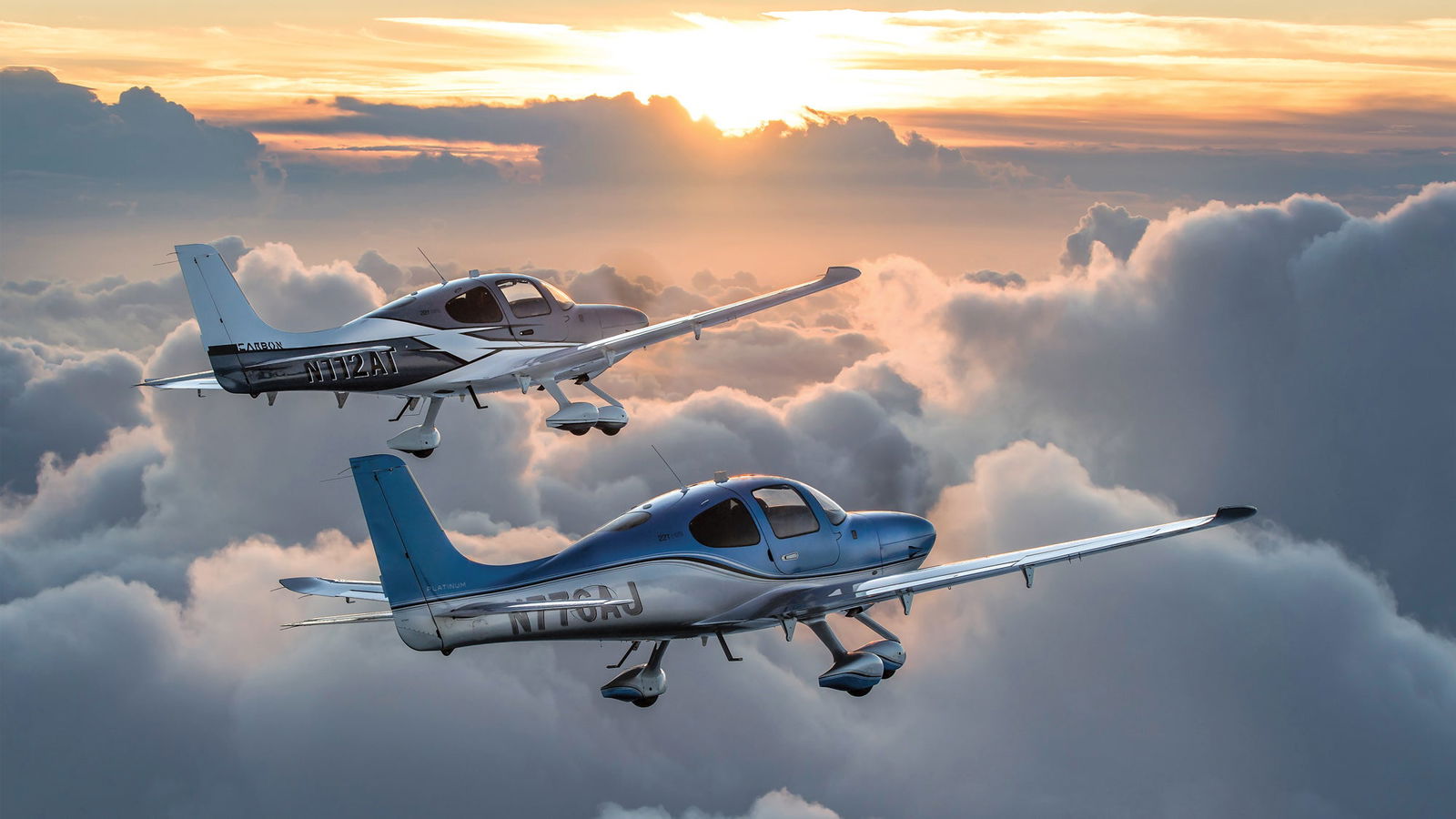
Climbing the Ladder of Operational Experience
Horacio Valeiras, a Southern California-based investment manager, began flying his club’s Cirrus SR22 and Columbia 350 shortly after learning to fly in 2007, accumulating about 300 hours for both business and pleasure. He soon purchased a Piper Meridian, which he often flew between offices in San Diego, Dallas and New York. Because Valeiras had no high-altitude experience, nor any experience operating a turbine powerplant, he hired CFI and mentor pilot Rich Pickett to teach him what he needed to know to safely operate the airplane and train to eventually meet the requirements of his insurance carrier. Valeiras says, “I did quite a bit of training early on.”
The insurance company required Valeiras to log 25 hours of supervised operating experience before he could legally fly the Meridian alone. “But we did a lot more, probably close to 100,” he recalls, during which Pickett shared pearls of high-altitude-operating wisdom. “I think more people get uncomfortable [in complex airplanes] when they don’t do [enough training] early on,” Valeiras says. On those long cross-country legs, he couldn’t help imagining what airplane might come next.
In 2011, he bought a Cessna Citation Mustang after looking at a TBM. “In the end, the ability to get up into the 40s and have two engines really attracted me to the Mustang.” He earned his type rating in the airplane with Pickett as his instructor but later enrolled in FlightSafety International’s five-day Mustang course that included simulator time. Valeiras says, “I did the five-day course in the simulator because I wasn’t comfortable trying everything in the airplane.” He earned his Mustang type rating with about 1,000 hours total time. By January 2014, the Mustang had morphed into a Cessna Citation CJ3 he’s still flying today. Valeiras completed a 16-day CJ3 course that earned him a type rating at ProFlight, now Tru Simulation. Because he was already typed in the Mustang, he had no SOE restriction on CJ operations.
Six years later, with about 3,500 hours under his belt, Valeiras says he feels quite comfortable in the CJ and that Pickett deserves the credit for most of that sense of security. Despite single-pilot certification in both the Mustang and CJ, Valeiras admits, “A lot of times, I’ll take a copilot.” On long coast-to-coast flights, “a copilot just makes my wife and I feel more comfortable. Recently though, it’s been harder to find copilots because of the pilot shortage.”
Valeiras says that in addition to flying with a good mentor pilot for as long as it took, he joined the Citation Jet Pilots Association early in his Mustang training. “It’s a great group of people. Their emphasis on safety has really improved the past few years,” he adds. “The nicest part of the CJP are the people. I’ve made a lot of friends all over the country. It’s just a really interesting group of people.” The CJP’s recent convention in Colorado Springs, Colorado, drew 520 attendees and more than 130 Citation aircraft.
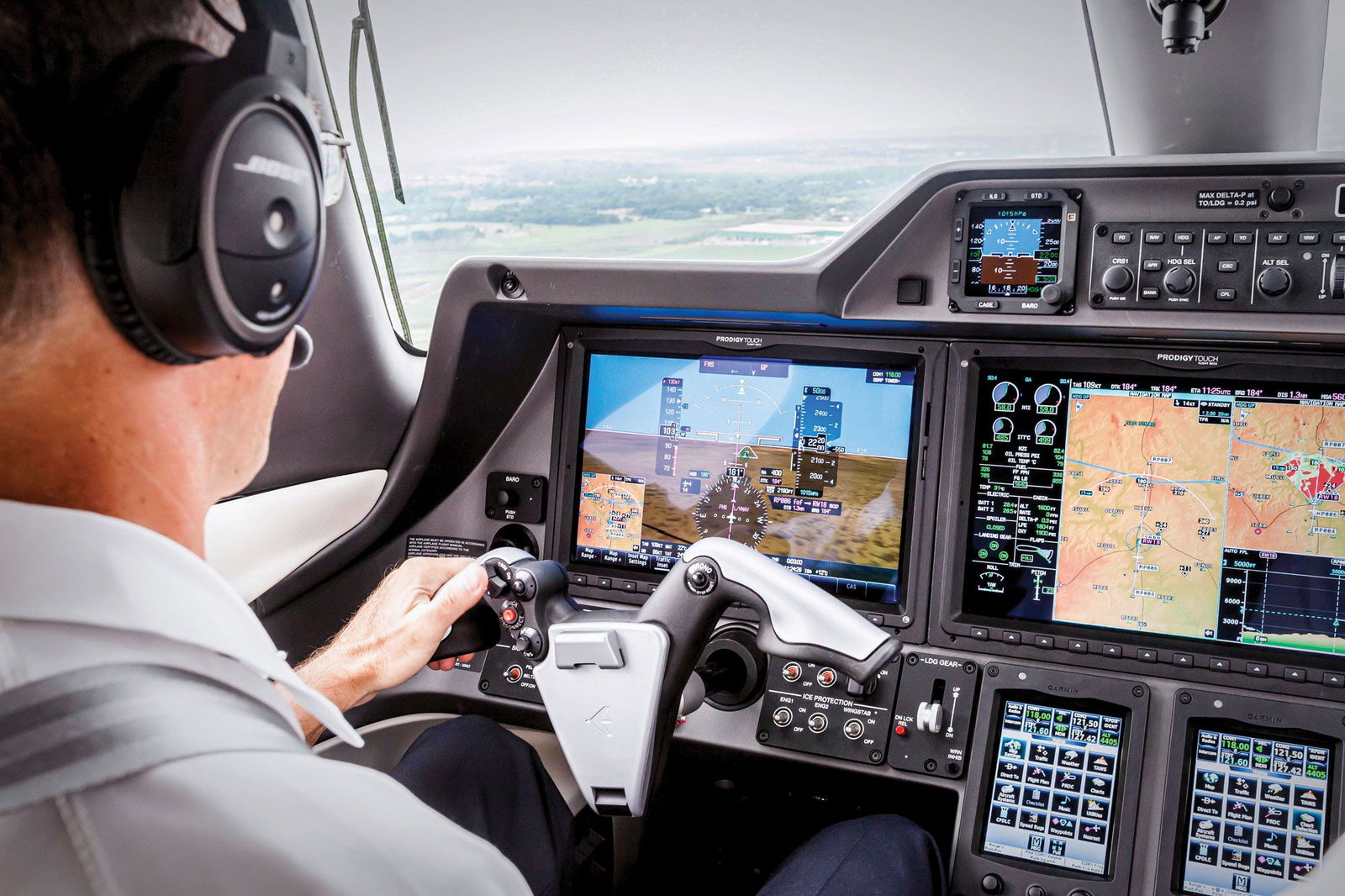
Troy Kyle currently flies a single-pilot-certified Phenom 300, even though he doesn’t often fly it that way. Kyle owns a medical-credentialing company near Houston. “When I run a full work schedule, I don’t want to worry, and another professional pilot on board helps take the pressure off.” Shortly after learning to fly, Kyle logged about 500 hours in a Cirrus SR22, then he traded it in on a Citation Mustang. “I bought the Mustang more for my family’s comfort.” He and his wife “like two engines too. She wasn’t keen on a single-engine airplane, even a pressurized one without a parachute, hence the Mustang.” He says the folks at FlightSafety International weren’t all that enthusiastic on a 500-hour pilot in a single-pilot type-rating course. “So I did the full transition training and earned a second-in-command type. I flew 25 hours with a mentor pilot and came back to work on a single-pilot endorsement. I also took extra training, like the high-altitude course.” He put 400 hours on the Mustang.
Kyle flew with mentor pilot Travis Wellik, now at Cirrus Aircraft. Kyle says what helped his transition to flying was that he was no stranger to risk management. “I was a naval rescue swimmer, so I flew in helicopters for about 800 hours, often handling the radios, navigation, crew coordination and CRM.” In the Navy, “they’re very big on making sure you have the right maturity level to be in charge in the back [of the helicopter]. They want someone who takes flying very seriously.” He remembers when more-experienced pilots convinced him to give aviation the proper respect. “I didn’t want to stick myself or my family anywhere I might get behind the power curve.”
With a growing family, Kyle needed more, and he gravitated to the Phenom 300. “It’s a nice airplane, but it’s a fast airplane. You gotta know what you’re doing.” When he was flying with Wellik, everything seemed pretty new even though he was instrument-rated. “Still, I found myself probably glancing over half the stuff on the charts that I should have paid attention to. Travis pointed out all those little gotchas.”
Kyle says he also learned quite a bit about the philosophy of flying. “I found there’s a difference [in my sense of responsibility] being PIC when I had nine people in the cabin versus nobody. That responsibility level was kind of a big shocker.” He says the value of the asset is much greater, as is the damage he could do to people on board and on the ground with one simple mistake. “Understanding that responsibility as a pilot helped me want to be incredible.” When asked about owner’s clubs, Kyle said, “I think they’re invaluable teachers.”
He reflected a bit on his flying experience to date, especially after someone told him he needed at least 1,000 hours in his logbook to safely pilot a jet. “Just having a thousand hours wouldn’t have prepared me for this transition. It’s not just an hours thing. I think pilots who try to move ahead [in airplanes] too quickly is a huge mistake. Flying with Travis for 25 hours, then earning my single-pilot type rating [was] definitely the way to go.” Kyle knows pilots who were behind the power curve in their flying early on because they never really learned how to run the avionics very well. “When they get lost in the avionics, they can’t think ahead of the airplane.”
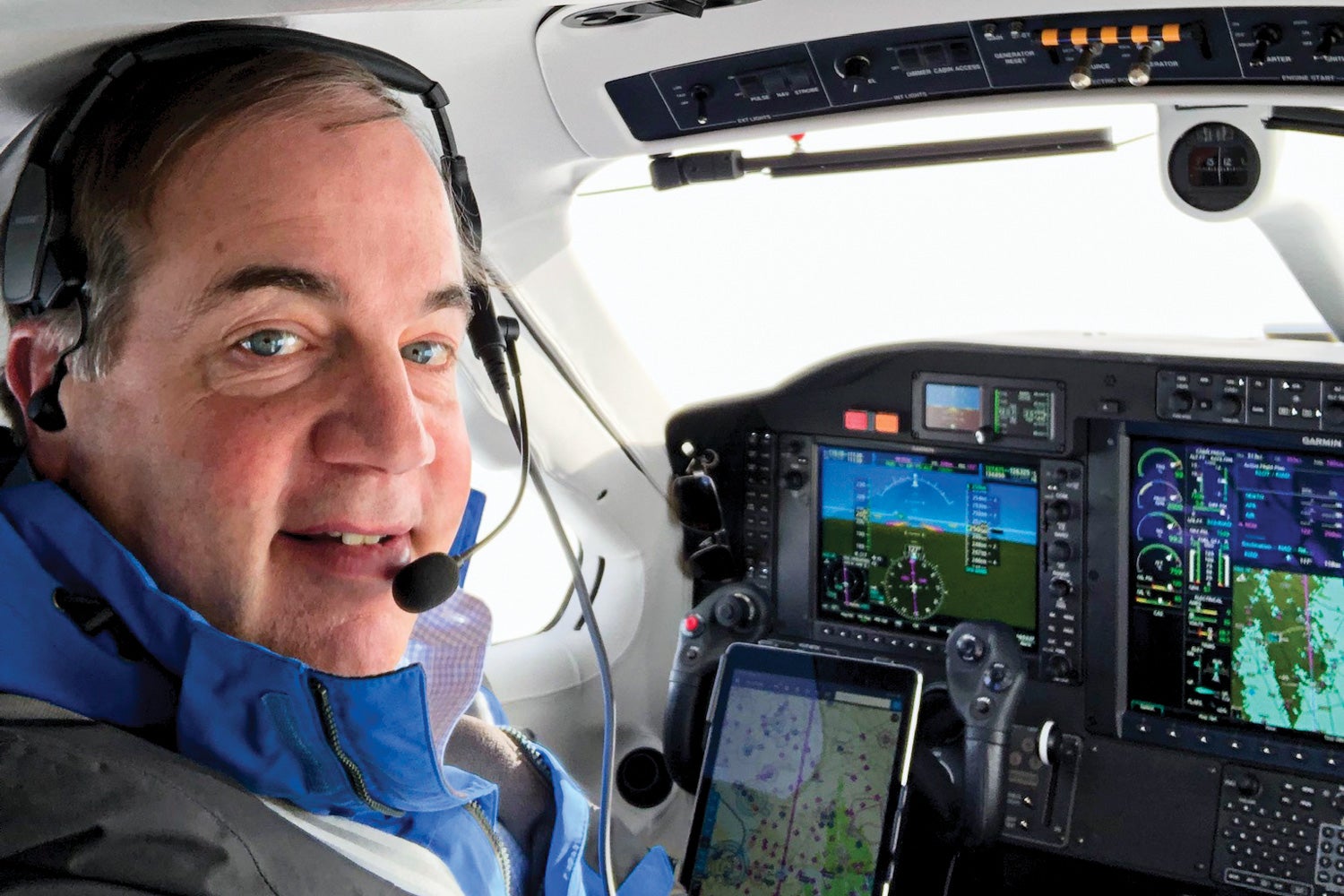
Mitigating Risks
Gathering the knowledge necessary to reduce the risks inherent in nonprofessional pilots operating turbine equipment includes identifying industry tools available to help with some of the tougher operational decisions.
FlightSafety International recently unveiled a Flight Risk Assessment Tool they believe to be a useful asset for single-pilot operators. The FRAT, offered to anyone who trains with FSI, is a more practical version of the FAA’s generic flight-risk assessment tool. Despite 38 written questions, many users found the FAA version lacking in serious mitigation strategies. FSI created an algorithm that analyzes each pilot’s responses and delivers suggestions in an easy-to-use format on their smartphone.
FSI’s FRAT asks questions to qualify the pilot’s skill and experience levels first—questions such as the category of pilot certificate, their ratings, their recent experience and so on—and it creates a multiplier based on the trip to be flown. Will the weather be VFR? Is there a second pilot aboard? Then the FRAT begins digging deeper into the flight for potential risks based on the pilot’s qualifications. Has the PIC recently shot more than five approaches, do they possess more than 200 hours in type as pilot in command, and have they trained within the past year? If so, the multiplier is probably going to be just 1. But if the pilot’s in the middle of the currency pack, that multiplier might be 1.25. New to the airplane with a small amount of total time and perhaps only a private pilot certificate, barely IFR current? Your multiplier climbs to 1.5. From there, the FRAT continues to probe. What time of the time day does the flight originate and terminate? How much rest did the PIC get in the past 24 hours? How much flight time have they logged in the past 60 days? What’s the terrain like near the departure and the arrival airport? Are gusty crosswinds expected on takeoff or landing?
Each time the pilot answers another question, they can see the assessment risk swing between low, medium and high, so it’s clear which question altered the score in which direction. There’s also red, yellow or green color coding related to the overall score. In addition to a final numerical score, the FSI FRAT offers the kind of suggestions a mentor pilot in the right seat might. If the destination runway is wet, are you sure the tires and brakes on your airplane are up to the task? No? Maybe an alternate with a longer runway might be a better choice. If you answered the FRAT truthfully and said you’re a bit sleep deprived, it might suggest postponing the trip until the following day or to bring along a copilot if you must go today. If the landing crosswind component is strong, why not choose another runway?
While the list of possible inputs and outputs is solid, keep in mind that the FRAT is not psychic. It can’t tell if a pilot is exaggerating their answers, or flat-out lying. The risk of such activity is the pilot’s to choose or not.
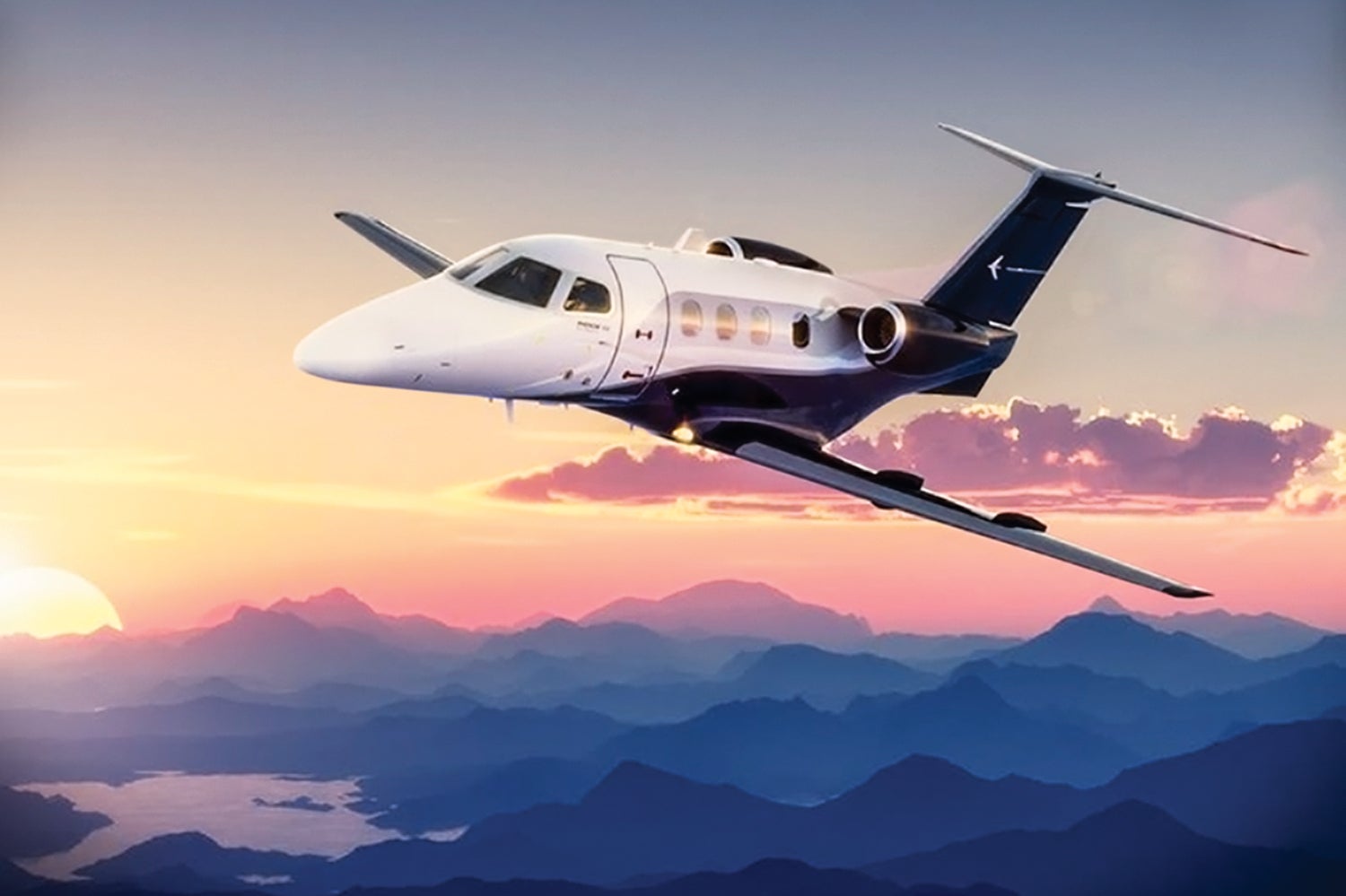
Prior Turbine Experience?
Ask a transitioning pilot how well they understand the technology behind a new airplane, and most will probably tell you their anxiety level rises when they consider the cockpit avionics and automation behind one of these sophisticated machines. Few seem as concerned about engines though. Perhaps that’s because many transitioning pilots have heard stories that turbine engines are much easier to operate and simply accepted that fact. For the most part, those assumptions are spot on. Additionally, though, turboprop pilots normally require a thorough checkout and mentor time in order to qualify for their insurance, while pure jet aircraft—or those weighing more than 12,500 pounds—require the pilot possess a type rating.
While turbine engines are more efficient and reliable than a piston powerplant, there are a host of operating concerns new pilots must learn early on. For instance, turbines don’t like operating below 10,000 feet where they consume eye-opening amounts of fuel. Turbines like flying above Flight Level 180. But operating an airplane into the stratosphere also demands a clear understanding of weather differences up high where temperatures are much lower and air pressure is less. Turbine-powered aircraft speeds are much faster than piston-powered general aviation traffic in the flight levels. Up high, new pilots will find themselves mixing it up with airline and business jets often operated by professional two-person cockpit crews exacerbating the speed of change for just about everything. Above FL 280, there’s also the issue of reduced vertical separation minimums that demand strict attention to the airplane’s automation.
Cirrus Design says they’ve delivered 61 new SF50 single-engine Vision Jets during the first six months of 2019 versus 63 during all of 2018. Some of those new customers are new to turbine and high-altitude operations, as well as a professional training environment. Travis Wellik, Cirrus’ supervisor of Vision Jet flight operations, says: “People coming to us with a private pilot certificate and an instrument rating do sometimes struggle with the intensity of the training as they move into a Vision Jet. But we cater the program towards them.” The Vision Jet course in Knoxville, Tennessee, runs 10 consecutive days.
Wellik adds, “If a pilot has never seen the basic workings of a turbine engine, or can’t identify a turbine from a piston engine, we help them understand the components, the concepts and the theories” behind turbine powerplants. “It really helps people understand what’s going on inside the engine, but it’s still a lot of information really fast.” He says they often must deal with pilots who hold an instrument rating, but are not current operating in the IFR system even with an autopilot, much less with “Elvis” turned off—as it often is during training.
Matt Bergwall, director of the Vision Jet product line, says their new owners aren’t simply tossed into the training mix in Knoxville. “Twelve to 14 months prior to delivery of their jet, our sales team begins reaching out to customers to be sure the airplane still fits their business mission.” They also begin explaining the training process and preparing them for success. Wellik says, “Most of these people come in wanting to learn and to be involved, so teaching them the [academic] material isn’t that big an issue.”
What is tough for new pilots, however, is the standard to which they’re held during training, all based on the ATP airmen certification standards that demand plus or minus 100 feet and 5 knots of airspeed, but all while flying IFR. The Cirrus people begin the training conversation long before a new owner arrives in Knoxville. It begins with a thorough understanding of how to integrate those often-new pilot standards that Vision Jet pilots will need to adapt. “Now, we’re going to conduct four approaches back to back to back without breaking,” Wellik says. “That’s 2½ hours of really intense flying. We deal with people who run businesses and are not professional pilots. They just dream about flying airplanes. They’re not focused on this kind of thing, so it’s a huge step for them.” Of course, there are the other topics most pilots would expect during training. “They learn the avionics, the operating procedures, build their systems knowledge and learn the maneuvers,” Wellik says. “Then they have to put it all together.” Most owners show up a couple of days before ground school to take Cirrus’ two-day avionics course separately, where they practice the basics like programming frequencies, loading flight plans, loading departures and arrivals, finding the checklists.” Wellik says Cirrus’ training works “not because we’re full of ourselves, it’s because we have a standard.” When a training session is complete, most pilots realize they were either up to standards or were not.
And what do the results show? Wellik says, “Initial first-attempt pass rate is between 83 and 85 percent.” For those who didn’t make it the first time, the other 15 percent are usually finished within a day after some extra training.
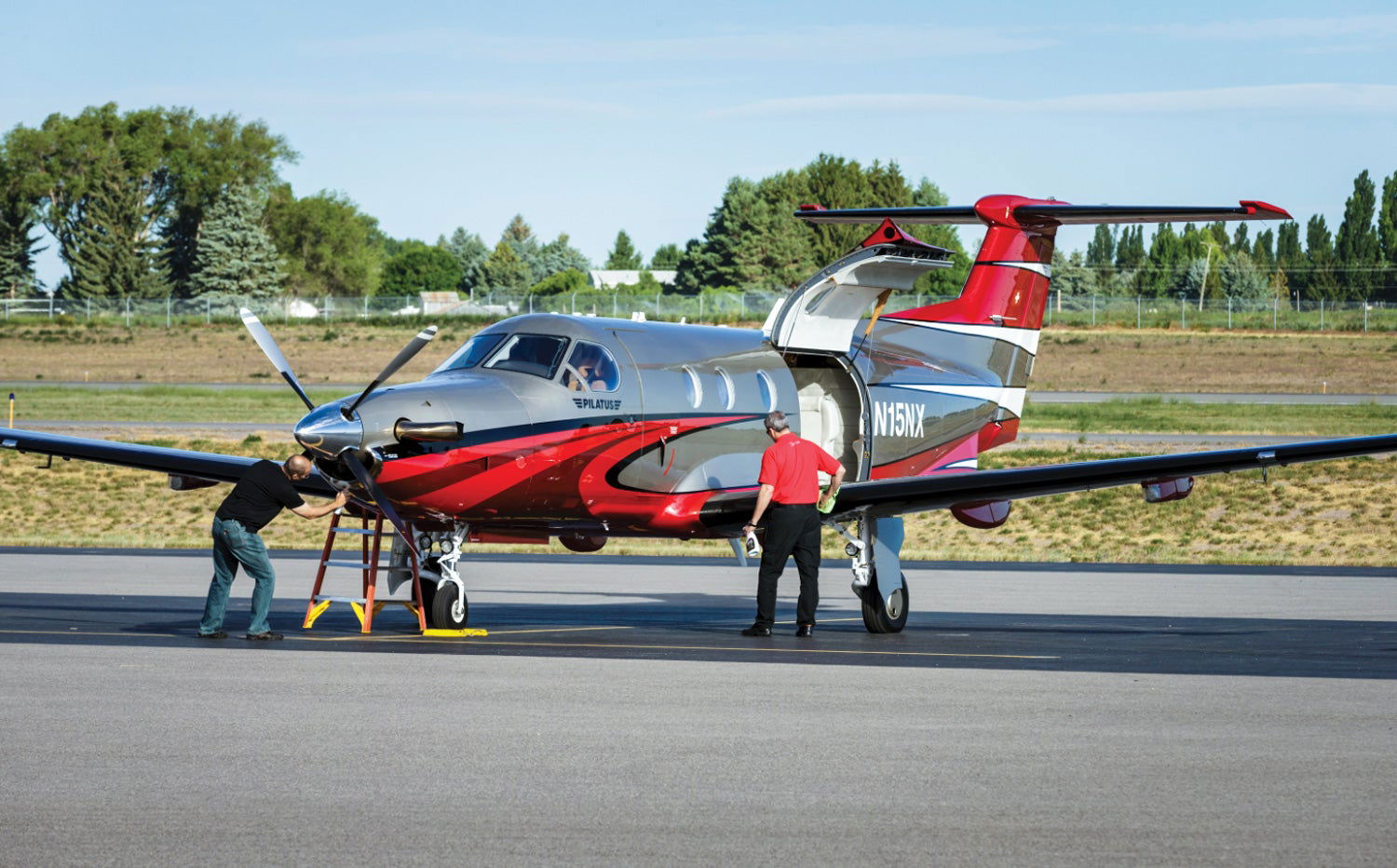
A First Turboprop
Matt Desch gave up the Cessna Turbo 210 he’d flown for 16 years, first for a TBM 700A and later a TBM 910. “I made the decision to transition from the T210 with 2,000 hours of flight time in [my] logbook.” He was encouraged to buy the TBM by many current owners who told him, “it was easier than flying my T210.” Desch, CEO of Iridium Communications, uses his airplane primarily for business.
Desch offers solid advice to anyone thinking of transitioning to a turbine airplane: “I think joining an owner’s type organization like the TBM Owners and Pilots Association in advance of my turbine transition was very helpful. They offer tons of resources on their website, like 25 years of forum posts on [myriad] issues and a very friendly online group who offered many tips and encouragement.”
During the transition from low-altitude piston airplanes up to turbine powerplants and high-altitude operations, many pilots search for the best textbook, some of which are written by people at the factory schools. Most pilots Flying interviewed for this story say the best experience came from their mentor pilots. That’s often because pilots headed to a jet airplane that requires a type rating quickly learn the course is focused on passing the check ride, not necessarily giving the applicant everything they’ll ever need to feel warm and fuzzy in the left seat. “While there are books on [the] turbine transition, I think they are mostly a waste of time and too general for something as specific as a TBM,” Desch says. “Insurance companies dictate the transition program—a one-week program at SimCom in the case of a TBM—that will typically be mandatory and for many…a number of hours with an instructor [or mentor pilot].” Desch says he did worry some initially about how much time he could devote to the training versus what might be required. “I actually delayed transitioning to a TBM for five or more years from the time I really wanted to.”
Desch’s answer to turbine and high-altitude operating turned out to be a local instructor with a lot of TBM experience. He arranged to fly with him for a number of hours following purchase and delivery of his TBM 700A. “There seems to be a lot of turbine and jet pilots in the country available to train, ferry or just be a mentor. In my case, TBM [Owners and Pilots Association] was a good resource. I flew with my instructor for a number of hours and on several early trips, so I could get a feel for the airplane. It was helpful to fly five to 10 hours before going to SimCom. It made the ‘official’ transition process more effective.”
Asked what he found surprising, Desch says: “I was warned and quite concerned about starting a turbine; it’s where I was told a mistake could cost hundreds of thousands of dollars, if not more. In reality, it’s a process like any other and, if handled correctly, isn’t a big deal. Operating turbine engines sounded exotic but, frankly, is a lot easier than my T210, where I constantly had to fiddle with mixture, EGTs, decisions about ‘lean of peak,’ shock cooling and the like. Turbines are way simpler: push the lever in to go fast and pull it out to go slower, while flying to a torque number and a specific turbine inlet temperature.”
Pressurization, RVSM and deicing were all new concepts, but Desch found good training handled those pretty quickly. Weather-management decisions were a bit trickier, he says, and “having radar is critical but is still a black art to me.” Overall, a big part of the transition to turbines is going faster and being in the flight levels.
“Systems are more complex and should be (eventually) understood,” Desch adds. “Turbine operation typically involves yearly recurrent training requirements for insurance, and a lot of learning goes on in those two or so days required every year. Overall, I was very comfortable flying a TBM after about 15 to 20 hours. I owned the T210 for 19 years, and I remember it took me 40 to 50 hours to be really comfortable. Still, it’s taken me about three recurrent training sessions and two to three years to feel truly confident and comfortable in any situation I could find myself in the airplane, including operating at bigger airports and longer distances.”
So much to learn about transitioning to a turbine and so many ways to grab that knowledge.


